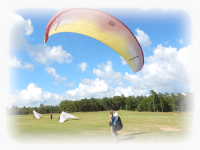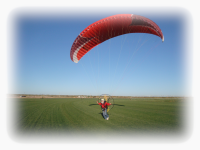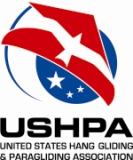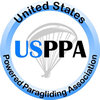Polini Thor paramotors
updated December 13, 2024
Polini parts and engines are sold by Skycruiser USA. This site does NOT have SSL protection but it is safe! Ignore the warnings from your browser about going to HTTP sites. If you just cannot browse it, go to Mecafly in France. They ship worldwide.
The Thor models share a common design and many parts. Individual models have different parts, depending on the model year. If you cannot find the info you need below or on the individual Thor model pages, check the Top 80 page or the General page for a wealth of info that is common to all Italian paramotors.
Detailed info and specifications for these models:
Thor 100 (obsolete)
Thor 130 (obsolete)
Thor 190 Light (obsolete)
Thor 190 EVO (obsolete)
Thor 200 (obsolete)
Thor 200 EVO (obsolete)
Thor 250 including dual spark (obsolete)
Thor 303 including dual spark
The information below is for all Thor models – what is not here can be found in the specific Thor models above. If you cannot find the information you are looking for here, go to the General page. ALL ITALIAN PARAMOTORS HAVE MANY PARTS AND PROCEDURES IN COMMON!
SPECIFICATIONS – useful general Thor information including torque values and maintenance intervals
Air box – the air box usually has an internal air filter. It must *NOT* be saturated with oil. It is unnecessary and can restrict air flow into the engine. Periodically wash the filter in hot soapy water, as needed.
Air box support problems on some models – The air box tends to slip crossways onto the carburetor and leak after the engine is run for some hours. Here's the fix.
Air filter – see "Air box" above
Assembly instructions - It is CRITICAL when assembling Thor engines that the manifold mounting nuts be properly torqued using blue threadlock if you want to minimize leaks.
Assembly video – This is for the Thor 130, other models similar.
Battery – WARNING!!! WARNING!!! Polini specifically forbids the use of lithium ion and LiPo batteries in the electric start system. These batteries deliver too much current to the electric starter and will burn it out and/or melt the wiring and relays. Traditional LEAD ACID batteries ONLY are allowed.
Bearing condition – What condition are the bearings in my engine? Which one is the most likely to fail first?
Bearing replacement and crankcase disassembly/assembly – Here is how to replace the main crankshaft bearings and seals
Carburetor used – see the detailed info above for the specific model
Carburetor preheat system – see "Cold weather operations" below
Choke control – This is needed for safety and convenience.
CHT – see "Cylinder head temperature gauge" below
Clutch – Information and servicing procedures for most models.
Clunk – see "Fuel filter" below
Clutch Oil – Here is a list of the oils that can be safely used in the Thor redrive.
Connecting rod – see "Rebuilding a paramotor" below for info on this part including when it should be replaced (which must include the entire crankshaft).
Crankcase assembly/disassembly – see "Bearing replacement and crankcase assembly/disassembly" above
Crankshaft replacement – see "Rebuilding a paramotor" below. The paramotor must be completely disassembled.
Cylinder head & piston notes – when doing the 100 hour required maintenance
Cylinder head, temperature, maximum – 230°C and 250°C maximum running temperature, never exceed 265°C/280°C but only for a few seconds.
Cylinder head temperature gauge – Not having a CHT is like driving a car without any gauges or warning lights. Most of the time you don't need them....
De-carbonizing a two stroke engine – Alex Varv shows how to do it without removing the cylinder. However, I do not recommend using any sealant between the cylinder and cylinder head. I have never had a head leak when the "O" ring is new and installed properly. The exhaust port should also be cleaned at the same time.
Decompression port check – Here is an easy, simple way to check whether the port is clogged or not.
Decompression port cleaning – It must be clear. Failure to keep it free of combustion deposits will greatly shorten the life of the starter.
Drips – Two stroke engine carburetors drip/leak fuel by design. It cannot be helped.
Electrical troubleshooting – see "Ignition schematics & troubleshooting" below
Engine stall – see "Stall" below
Engine upper support bracket failure – see "Support bracket" below
Exhaust flange springs – Use paraglider line to stretch the springs for replacement/removal. Do not use Vise-Grips or pliers to stretch the springs because this will nick the tempered surface of the spring and weaken it. Here is a video on how to properly do it. A defective exhaust flange gasket cannot be fixed with RTV – replace the gasket. Use PG line (best) or aircraft wire to secure the springs if they break.
Exhaust gasket installation – The side of the gasket with the greater metal-faced area goes away from the cylinder head. Thoroughly clean and degrease all surfaces, apply a thin coat of gray RTV to both sides of the gasket, and install the exhaust port. Apply RED threadlock to the studs and torque to 10 Nm. When installing the exhaust flange, finger tighten the nuts until RTV squeezes out from the flange, wait an hour, and then tighten to torque.
Exhaust port cleaning – after many hours the inside of the exhaust port and the manifold can have substantial deposits of carbon and/or lead phosphate/monoxide.
Exhaust system installation – 1. Install springs first per above. 2. Install the button-head screw underneath the carburetor first THEN 3. Install the button-head screw underneath the exhaust port. Use blue threadlock on screws and tighten 3-4 Nm (just snug, let the threadlock do its job).
Flash starter – an expensive, annoying disaster NEVER PULL A POLINI STARTER WHILE THE ENGINE IS RUNNING. IT WILL CHEW UP THE PAWLS.
Flash starter cord length – see "Starter replacement cord" below
Flash starter parts list – before 2019
Flash starter parts list – after 2019
Flywheel removal and installation – this information is from the relevant section of the timing page
Four cycling – see "Performance tuning" below
Frame cracks – see "Metal fatigue" below
Front engine mount becoming loose
Fuel warning from Polini – pilots must use high octane gasoline. If it is NOT available, Polini says to use AVGAS.
Fuel filter – What kind/type to use? If you choose poorly, the engine will also run poorly, if at all. Removal and installation tips. The fuel system MUST be purged of old fuel and air when changing out the fuel filter!
Fuel line size/installation – these are IMPORTANT notes that will prevent engine fuel starvation
Fuel mixture – 2% (50:1) full synthetic oil with premium MOGAS. See also the fuel oil specification page for more detailed information
Fuel system leaks – (see also "Leaks of the engine" below)
Fuel system modification – the FSM fixes the problem of fuel starvation due to fuel vaporization (still being tested at this time by pilots)
Fuel system test – A thorough test of the fuel system. This is the quick version of the test.
Fuel tubing size – ID 4.8mm (3/16") x OD 8mm (5/16") Use Tygon® LP1100 Low Permeation Fuel Tubing (ethanol resistant). It is available from Miniplane-USA. Do NOT use ordinary vinyl tubing as it will become stiff quickly and stress the connections on the tank and engine. Auto parts stores do NOT have the right type.
Ignition coil – the black wire goes to ground, the blue wire goes to the kill switch and magneto
Ignition timing – The Thor engines have the ignition timing fixed and it cannot be changed.
Ignition schematics & troubleshooting – the Thor engines (except the Thor 190) have magnetos and have some special techniques that must be used to troubleshoot them
Kill switch problems – A low bidder made the wire used in the kill switch circuit.
Kill system, alternate – The Italians have demonstrated poor quality control over the years, including faulty cabling and connectors in the kill switch system installed on paramotors. This could be exceedingly dangerous, especially with the larger engines.
Leaks of the engine, exhaust, or redrive – (also, see "Fuel system leaks" above)
Leaks of the reed valve – see "Reed valve" below
Magneto – see "Ignition troubleshooting" above
Maintenance – see SPECIFICATIONS above
Metal fatigue – Pilots who put 100's of hours on any paramotor must keep an eye out for this hazardous and hard to see problem.
Midrange roughness & "four cycling" – see "Performance tuning" below
Miniplane frame information – options, sizes, side stick lengths, etc.
Mounts, rubber* – Here is a way to quickly check them. If you replace them with the heavy duty Viking mounts, do not make the mistake noted here.
Overhaul – see "Rebuilding a paramotor" below
Owners manuals – see the links for each particular Thor model on the main paramotor page
Performance Issues, general – This is what to do if the engine will not start or, for example, dies at full throttle
Performance tuning – Most paramotors run poorly in the midrange due to a rich air/fuel mixture, the range that we spend most of our time flying in.
Piston failure – This page from Madsen's (a chainsaw dealer) gives many maintenance and repair tips on 2 stroke engines including the piston. Paramotors are more like chainsaws and motorcycle racing engines than any other. Paramotors use carburetors from obsolete chainsaw.
Piston replacement – Motocross Parts in the U.K. published these helpful notes on sizing a replacement piston.
Preheat system of air entering the carburetor
Propeller hub info, removal, & installation – this page is particularly about the Top 80 but has important information relevant to the all hubs, especially vibration sources.
Propeller info – General information including how to correctly attach and repair it
Pulleys – see "Starter pulleys" below
Purging the system of fuel – It must be done if a paramotor is to be stored for more than a few weeks, especially if you are using ethanol fuels.
Rebuilding a paramotor – includes disassembly and assembly of the major parts of the engine e.g. flywheel, cooling fan, carburetor, etc.
Redrive fill plug gasket – this flimsy gasket fails after no time. An 11mm ID O ring will work better than the gasket ever did. Do NOT over-tighten.
Redrive gear noise – it can be safely ignored. The noise will be more pronounced when the prop is rotated in one direction vs. the other.
Redrive repair – see the clutch redrive section of Rebuilding a paramotor
Rich running condition – see "Performance tuning" above
RTV – e.g. Permatex Blue or Ultra Grey. Used to seal case halves, some gaskets, and surfaces. Apply with a clean finger. Forget the spout that comes with the tube. It is useless. Use Ultra Grey for sealing surfaces that may become hot, like the exhaust flange gasket. MORE SEALANT IS NOT BETTER! It is NOT as simple as most think!
Safety net replacement – replacement safety netting from Miniplane must be assembled.
Safety net wear – How to minimize wear and tear on the safety net
Schematics – see "Ignition schematics & troubleshooting" above
Spark plug installation and information – do NOT waste time troubleshooting an engine unless the spark plug is new, correctly gapped, and installed. IT SIS NOT SIMPLE!
SPECIFICATIONS – Dimensions, torque values, maintenance intervals, and other useful information
Springs, exhaust – see "Exhaust springs" above
Squish – Polini does not require the squish to be adjusted on their engines. Go to this page for information about squish and what it is.
Stall – Going to full throttle, the engine stalls! What happened?
Starter – see "Flash Starter" above
Starter cord length – see "Starter replacement cord" below
Starter pulleys – The OEM Viadana pulleys will quickly wear out and fail. Here is the solution...
Starter replacement cord – The strongest and longest lasting you can install on your engine.
Starting – Start your engine the first pull
Stress cracking of engine components – see "Mounts, rubber" above
Support bracket – WARNING! WARNING! Polini has modified the engine support bracket for safety reasons
Temperature – see "Cylinder head, temperature, maximum" above
Throttle placement in the hand while launching a paramotor
Throttle cable – Cleaning, lubrication, modifications, and cruise control info.
Timing – see "Ignition timing check" above
Torque Values – See "SPECIFICATIONS" above. The specific Thor manuals on this website also have torque values. If you cannot find the correct value, check the Top 80 specification page.
Users manuals – see "Owners manuals" above
Vapor lock – it is the most common fuel problem in paramotors due to the near universal location of the fuel tank far below the carburetor
Vibration – see "Propeller hub info, removal, & installation" above
Warming up – When the cylinder head temperature reaches 70ºC, the fuel/air mixture is 100% vaporized so the engine will not be fuel starved and potentially overheat. Various moving parts of the engine must also be at the correct temperature to reduce wear and seal properly.
![]()




